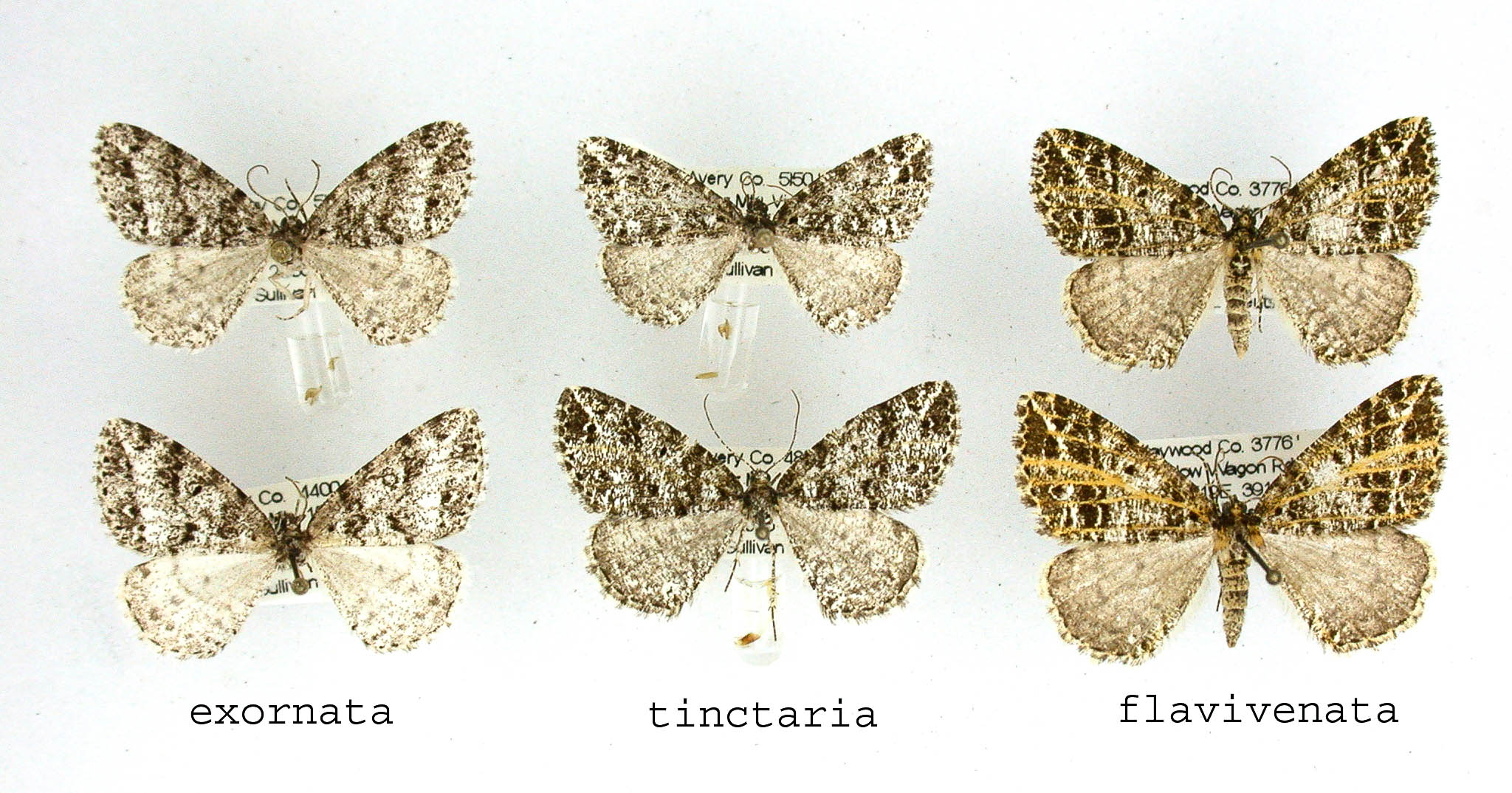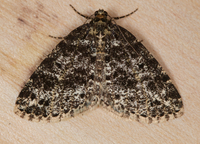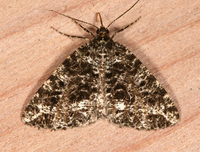Distribution in North Carolina
Distribution: Probably restricted to the MountainsCounty Map: Clicking on a county returns the records for the species in that county.
Flight Dates: Click on graph to enlarge
Flight Comments: Single brooded in the spring but there are not a lot of records because few observers are active at higher altitudes in May and early June. Wagner et al (2001) report that the order of species’ appearance is O. flaviventata, then O. tinctaria and finally O. exornata with a week or so separating emergences.
Habitats and Life History
Habitats: Our records come from upland stands of hardwoods, primarily peaks and ridges above 3,500 feet. Larval Host Plants: The host plants are reported to be Viburnum for all three Orthofidonia species (Wagner et al., 2001) but given that the three species seem to occur together over most of their range, fly at approximately the same time of the year and utilize similar habitats, one would expect specialization perhaps of each species to a different species of Viburnum . - View Observation Methods: Adults come to light but doubtfully to bait and have not been reported to be day flyers.Wikipedia
Status in North Carolina
Natural Heritage Program Status: [W-PK]Natural Heritage Program Ranks: GNR SNR [S1S2]State Protection: Has no legal protection, although permits are required to collect it on state parks and other public lands. Comments: We have very few records for this species, but its host plants suggest that it should be fairly widespread in the Mountains. More data are needed on the host plants used in North Carolina, as well as its specific habitat associations, before its conservation status can be assessed.

 »
»



 »
»

